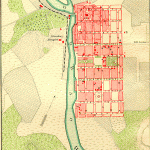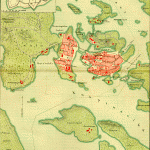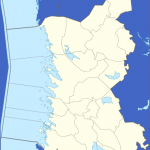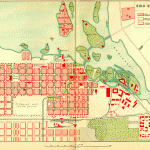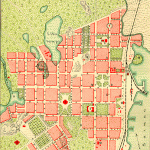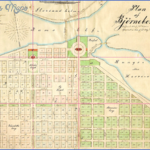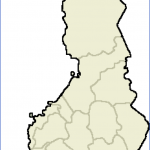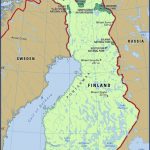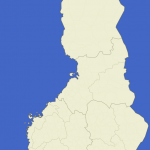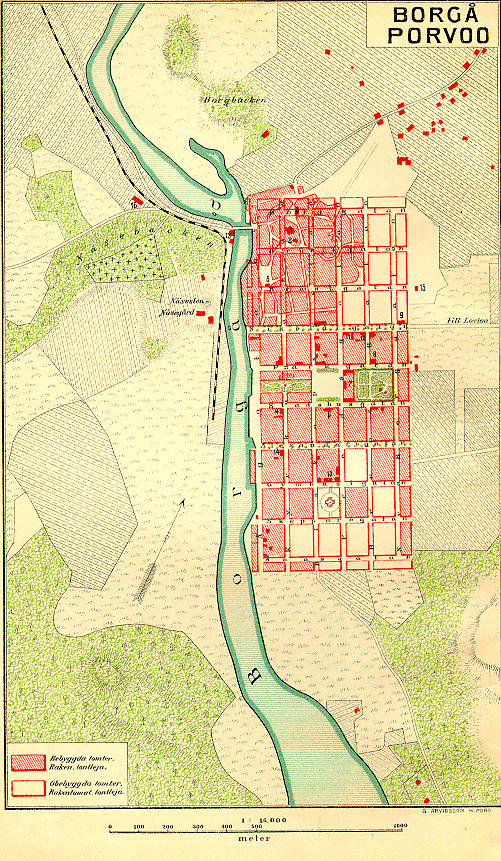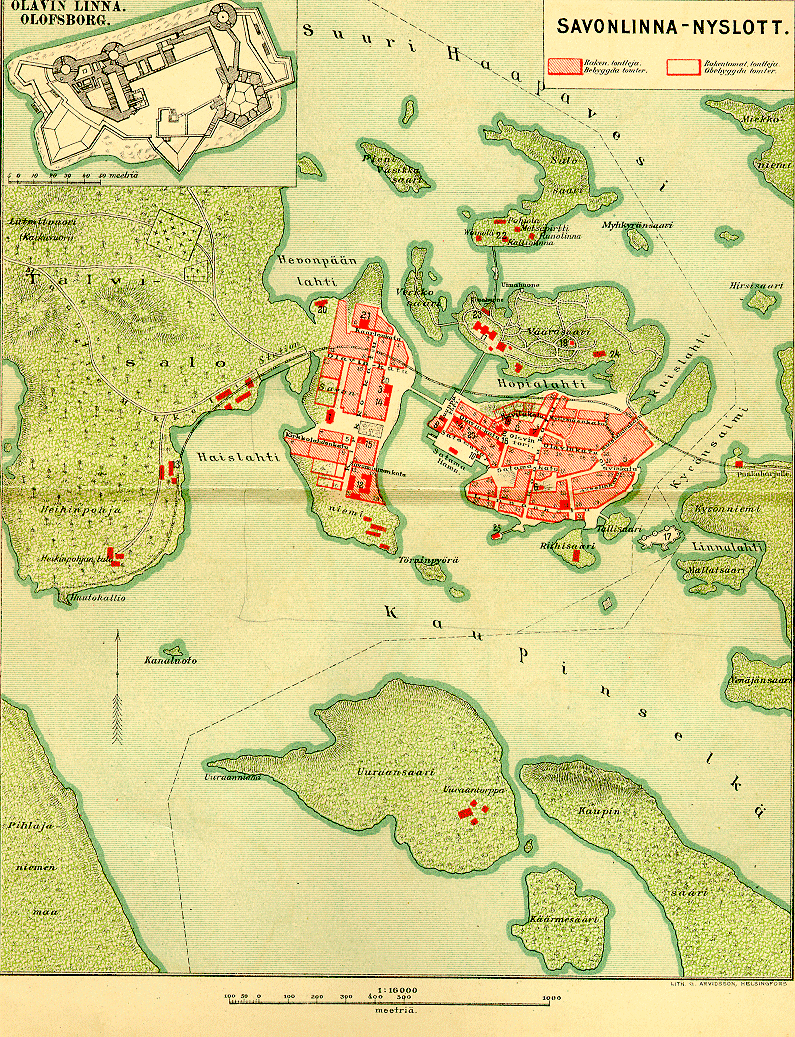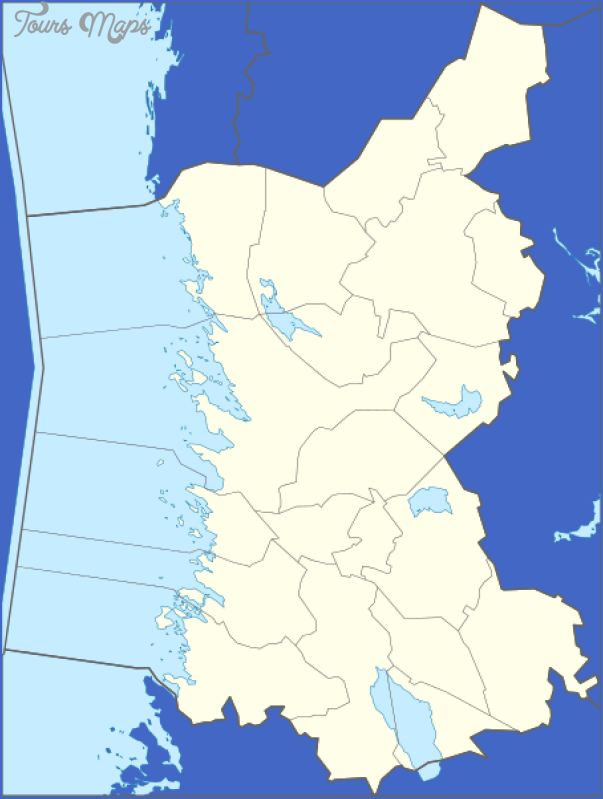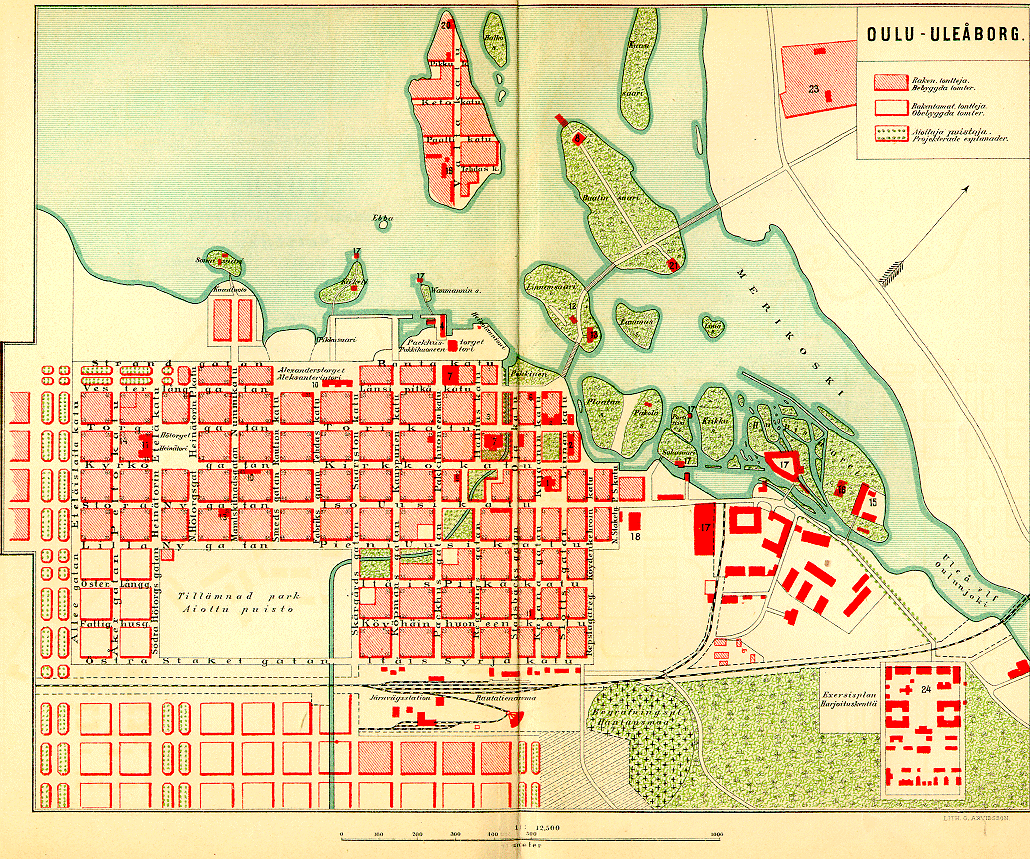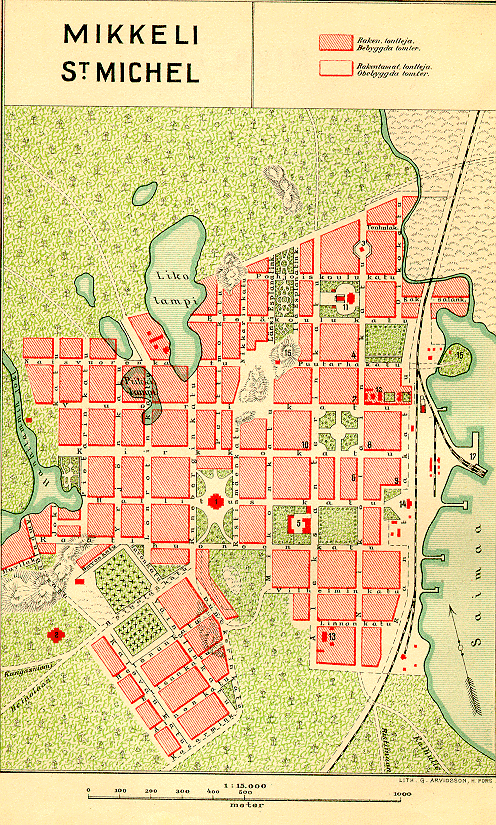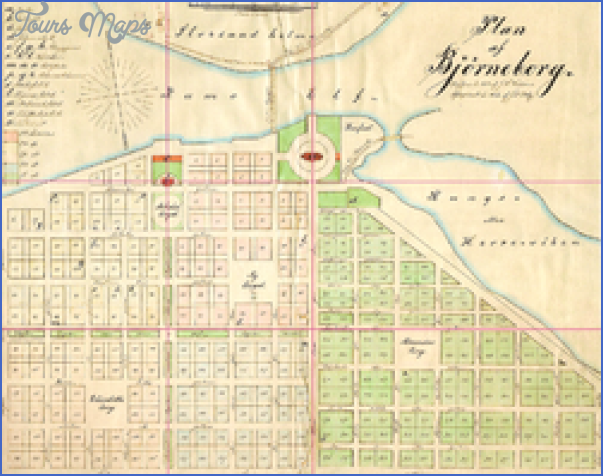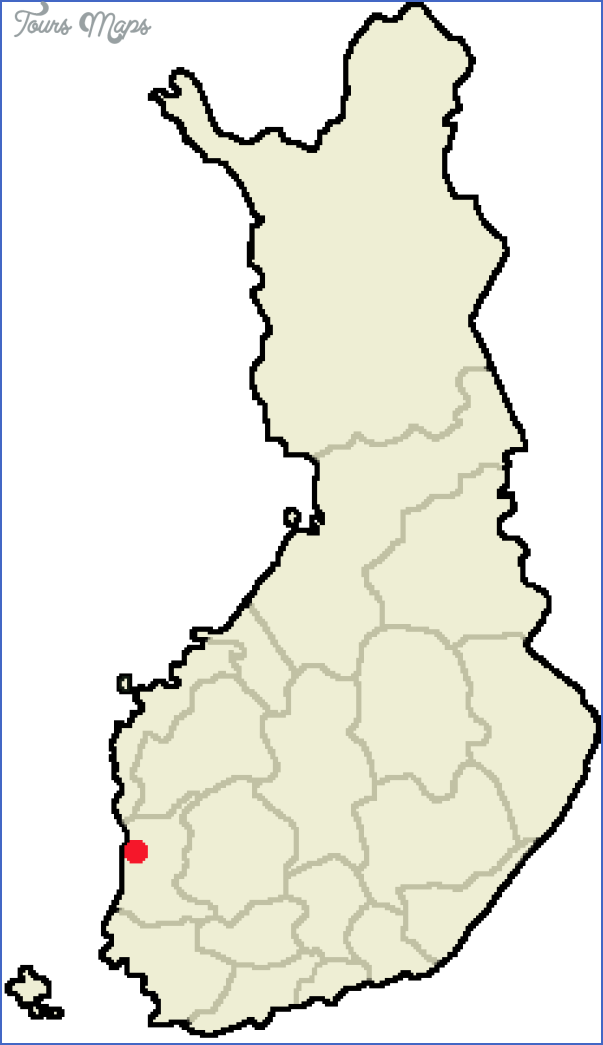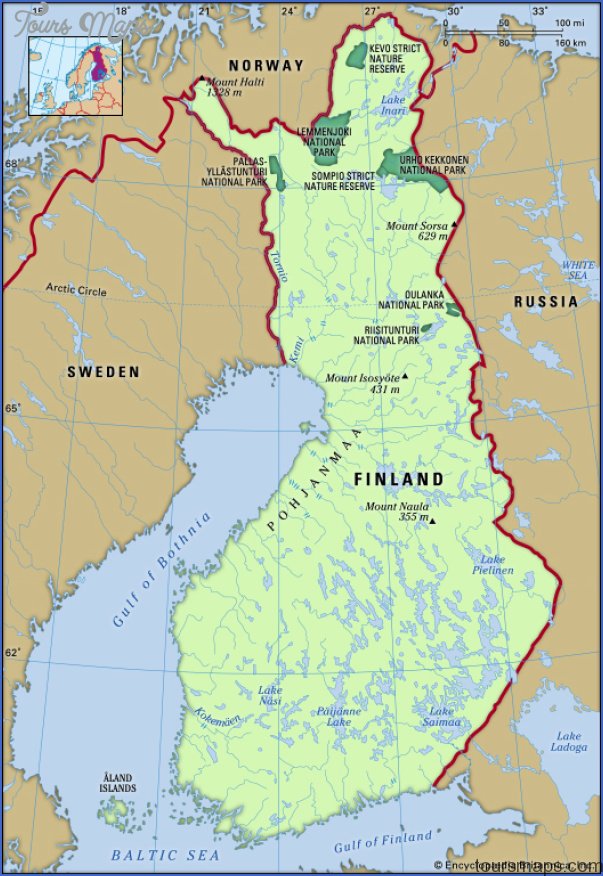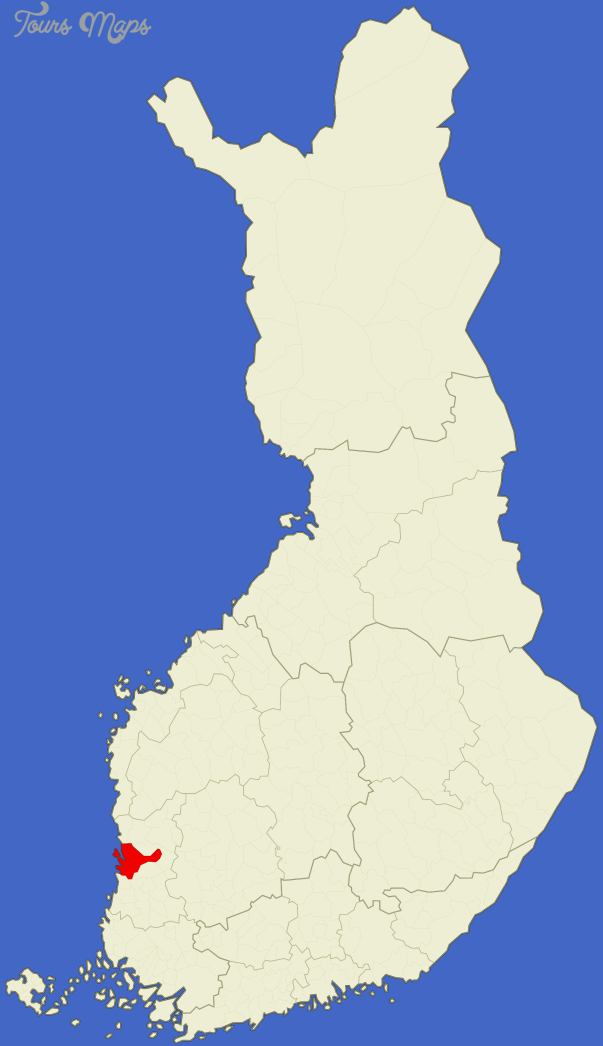Province: Turun ja Porin laani (Abo och Bjorneborgs lanTurku-Pori).
Altitude: 1 5 m (49 ft). Population: 81,000.
Postal code: SF-28100. Telephone code: 9 39.
HOTELS. Juhana Herttua, Itapuisto 1, 68 Satakunta, Gallen-Kallelankatu 7, 111 Cumulus, Itsenaisyddenkatu 37, 120 SP; Karhun Kruunu, Keskusaukio 2,114 Otava, Valtakatu 1 5, 48 b. AT yteri beach: Rantasipi Yteri, 306 b. s of town: Raumantien Motelli, Niittymaa, 18 b.
VACATION and SUMMER HOTELS. Etappi, Korpraalintie 36, 160 b. (15 May to 15 August); Tekunkorpi, Korventie52, 80 b. (2 May to 28 August).
EVENTS. Pori Jazz Festival (July); Whitefish Festival (end of August); Pori Days (end of September).
SPORTS and RECREATION. Tennis, bowling, squash, riding, fishing, swimming, rowing, sailing, skiing.
The old commercial and industrial town of Pori is on the S bank of the Kokemaenjoki, some 20 km (12 miles) above the mouth of the river in the Gulf of Bothnia. The town was originally farther upstream, but was moved in 1365 and
The Pallastunturi Hills again in 1558, because the mouth of the river was moving steadily farther W due to the rise in the level of the land and the continuing deposit of sand. The town received its municipal charter in 1558 from Duke John, Gustavus Vasa’s son. The last of a series of fires, in 1852, made it necessary to replan the town, and the new Pori was laid out around two broad avenues intersecting at right angles. In addition to a fishing harbour and two commercial harbours, it has woodworking and metal-working industries.
SIGHTS. The main features of interest are situated near the N end of Pohjois-puisto Avenue, on the banks of the Kokemaenjoki. On the W side is the Museum of the Satakunta District (founded 1888), with a collection of
35,000 items. Nearby stands the Municipal Theatre (1884), which continues the tradition of the Finnish-language theatre founded in 1872. Facing the avenue is the Venetian-styleTown Hall (August Krook, 1895), originally the mansion of the Junneliusfamily.Tothe E, in asmall park, is the neo-Gothic church of central Pori (G. T. Chiewitz, 1863), with a tower 75 m (246 ft) high; altarpiece (the Resurrection) by R. W. Ekman. In Paanake-donkatu, which leads from the church to the Tampere road, is an indoor swimming pool.
To the W of mid-town is the Old Cemetery, and beyond this the New Cemetery, with the Juselius Mausoleum (Josef Stenback, 1902), commissioned by the industrialist, F. A. Juselius, for his
daughter, who died at the age of eleven. The frescoes in the mausoleum were originally by the well-known painter of the Finnish national Romantic” school, Akseli Gallen-Kallela, but when the originals deteriorated they were replaced by new paintings by the artist’s son, Jorma, following his father’s original designs. On a peninsula on the N bank ofthe river, at the outflow of the Luotsimaenhaara, is the Kirjurinluoto Park, the scene of the Jazz Festival, with the Summer Theatre.
SURROUNDINGS. Avery attractive excursion from Pori is on Road 265 to the sandy beach of Yteri, continuing to Mantyuoto and over a causeway to the island of Reposaari, passing on the way the Kaana water-tower (cafe; view). At Yteri are a hotel, a camp site and vacation chalets. On Reposaari can be seen a church in Norwegian style and, by the harbour, a monument to the torpedo-boat 52 which sank in a storm in 1927. Road 2 runs SE from Pori to Helsinki. Some 7 km (4 miles) from Pori a side road goes N to Ulvila, the site of Pori from 1365 to 1558 (church, 1429).
S of Pori, on Road 8, is Rauma, a town with distinctive traditions of its own; many of its 30,000 inhabitants speak a special dialect which is not understood in the rest of Finland. The town was founded in the 13th c. and received its charter from King Kristoffer in 1442. About 1550 it was temporarily evacuated when its inhabitants were ordered to move to the newly founded town of Helsinki, but after some years they were allowed to return. In the 17th c. Rauma developed into a busy seafaring town. In foreign countries, its seamen learned the art of making pillow lace, still practised in the town.
The layout of the old town dates from the 16th c. but the present timber buildings are mainly 18th and 1 9th
c. In this area are the Holy Cross Church, originally belonging to a 15th c. Franciscan friary, and the ruins of the 14th c. Trinity Church. In the middle of the old town (many specialised shops) is the Museum, housed in the former Town Hall (C. H. R. Schroder, 1776). To the S of the old town are an indoor swimming pool and a water-tower and a restaurant, from which there is a panoramic view, and adjoining the tower a sculpture by Aila Salo, Through Difficulties to Victory (1976). To the NW, beyond the railway line, is the recreation area of Otanahti, with sports facilities, a swimming pool, baths and a sauna. Next to Otanlahti is the Poroholma camp site, with the dock used by the motorboats which, in summer, run regular cruises among the offshore islands.
Pori Bjorneborg Finland Map Photo Gallery
Maybe You Like Them Too
- The Best Cities To Visit in The World
- World’s 10 Best Places To Visit
- Coolest Countries in the World to Visit
- Travel to Santorini, Greece
- Map of Barbados – Holiday in Barbados

